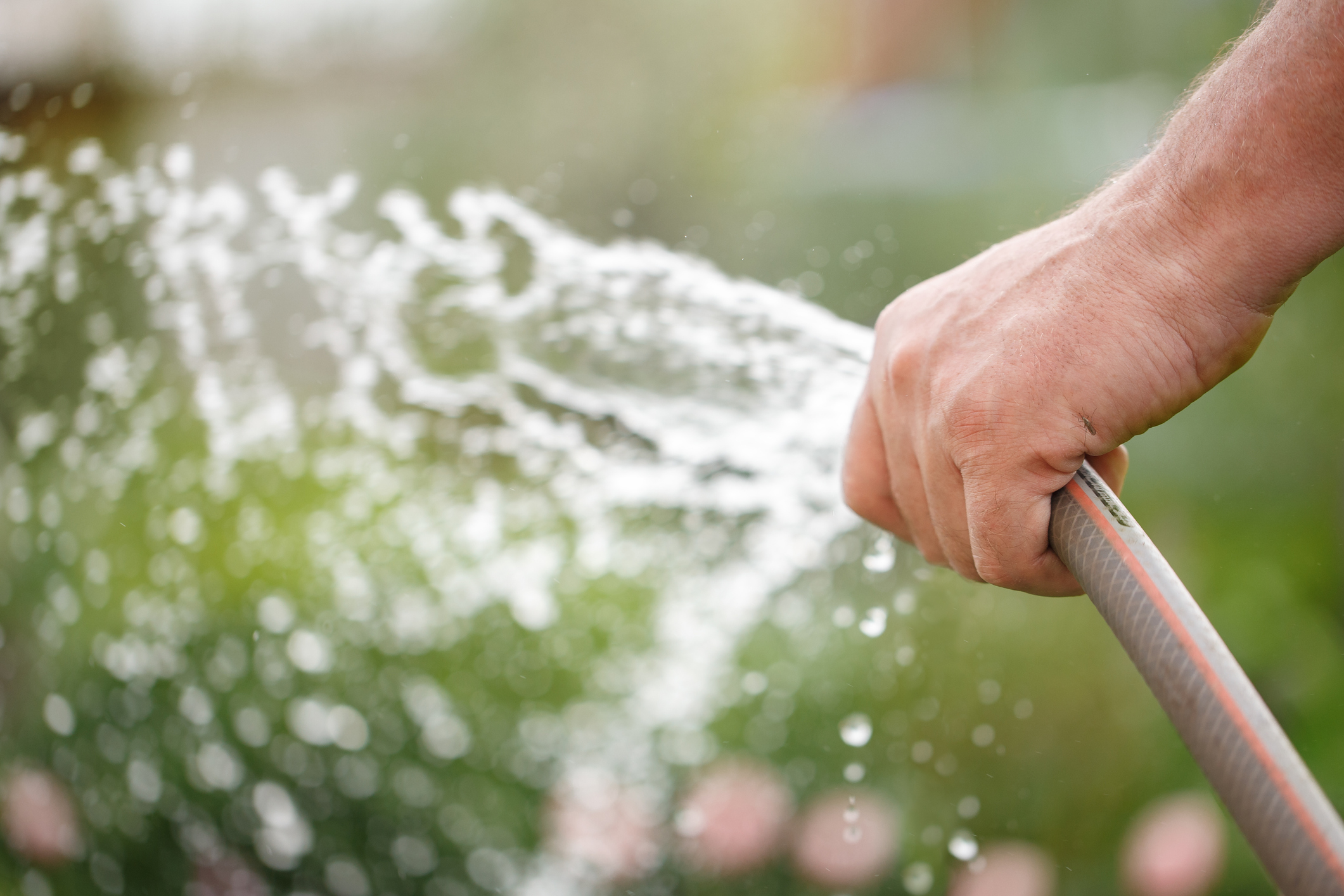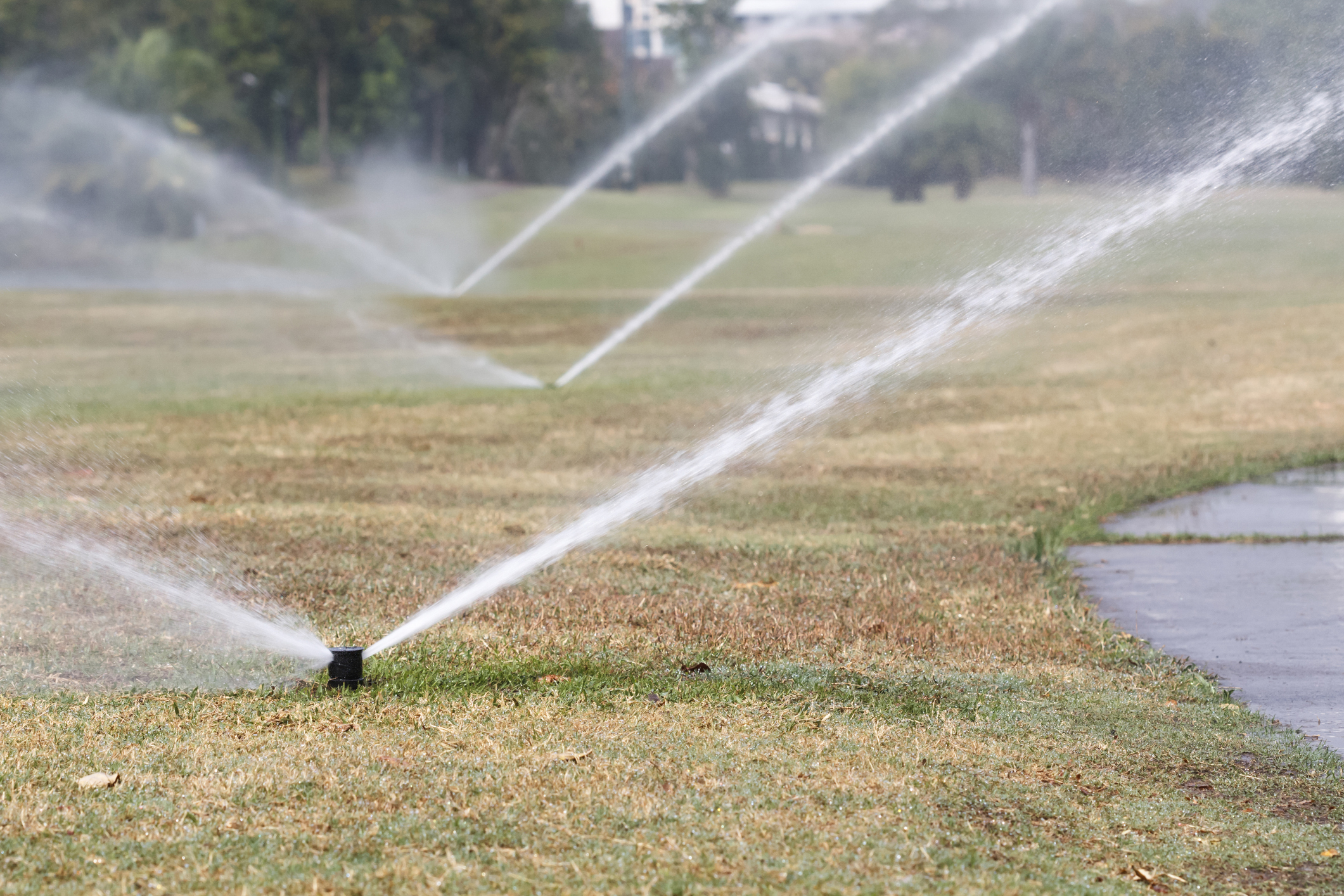Your Cart

Watering is one of the most crucial lawn care practices for growing a lush, green, healthy lawn, but it can be more of an art than a science. The specifics will vary based on your region, soil, and grass types, as well as heat, humidity, and rainfall throughout the year. We’re here to give you some helpful tips and answer all your watering questions, so you and your lawn will be ready for summer! On average, depending on your grass type, your lawn needs 1½ to 2 inches of water every week to encourage a strong and healthy rooting system. Each time you water, wet the soil to a depth of 3 to 4 inches. Depending on your soil type, this should create enough reserve moisture in the soil to sustain it until the next time you water. Pay attention to how your soil responds to watering. Sandy soils, for example, will need to be watered more often than clay soils, but less water is needed to wet sandy soil to the 4-inch depth. In general, you should water each section of your lawn twice a week for about 35 to 40 minutes. Make sure the water is evenly distributed to avoid leaving dry or soggy areas. A common mistake made by homeowners, especially those with irrigation systems, is to water every day. This is too frequent and can result in the spread of lawn disease. It’s best to water deeply and infrequently, just a couple times a week. However, in southern climates, especially during hot and dry periods, your lawn should be watered as often as needed to maintain its desired green color. It’s best to water for long periods of time to saturate the soil, which will help strengthen the rooting system and reduce the risk of run-off. The ideal time to water your lawn early in the morning, between 5 and 9 am, when temperatures are cooler and the water will not evaporate. Avoid watering in the evening, as this can promote the growth and spread of lawn diseases. You don’t need to invest in a fancy moisture meter to determine if your soil is getting enough moisture. Simply push a screwdriver or a garden trowel into the soil until you feel a little resistance. If it goes in easily, your lawn is probably getting enough water. However, if it does not push easily into the soil, then additional water is needed. Keep an eye on how much rainfall your region is receiving at different times of year. You can measure recent rainfall on your property using a rain sensor, or even by reusing a small container, like an empty tuna can, to catch the rain. If your lawn has received an inch of rainfall, it probably does not need additional watering. However, if it has been storming heavily, it’s actually possible that the fast-paced runoff can prevent the water from fully penetrating the soil and reaching the roots of the grass. Watch for symptoms of drought to determine if supplemental watering may still be needed. If your lawn is not receiving enough water, it will experience drought stress, causing it to turn brown, lose important nutrients, and potentially spread lawn disease. Look for these telltale signs of oncoming drought stress to determine if your lawn needs supplemental water: Areas of the lawn–especially near sidewalks and driveways, under large trees, and on slopes–take on a dark silver or smoky blue-green haze. In extreme cases, the lawn may appear yellowish. Indentations from footprints or lawn mower wheels don't spring back shortly after they are made. If your lawn shows symptoms of drought, water it immediately, regardless of the time of day, and adjust your watering practices to make sure your lawn is getting water when it needs it. In regions that grow cool-season grasses, summer dormancy is one of nature’s survival mechanisms to help your grass endure stressful conditions, such as the prolonged heat and drought of summer. The severe stress causes the lawn to temporarily stop growing. If your lawn goes dormant for an extended period of time in the summer, it may not entirely recover, leaving you with portions of the lawn that will need to be renovated. You can spot summer dormancy by the following symptoms: The lawn appears “dead.” The leaves and stems of the grass plants turn brown as the crowns and buds stop growing. The grass begins to grow again when the weather brings cooler temperatures and more rainfall. You can prevent summer dormancy by taking the following measures: During hot, dry periods, water your lawn in the morning. During hot, dry periods, raise your mowing height to 2.5 to 3 inches. Water deeply and infrequently all season long so your lawn develops a deep, healthy root system that is better equipped to survive periods of stress. Maintain your lawn with good cultural practices all throughout the year. When your lawn is in trouble, contact your local Weed Man for more tips that are specific to your region and lawn conditions. On the other end of the spectrum, overwatering can also lead to a number of problems in your lawn. Too much water can lead to a shallow root system, which is bad at absorbing nutrients and leads to thin, unhealthy turf. It also fosters the growth of lawn disease, weeds, and mushrooms. One obvious way to tell if your lawn is getting too much water is if you notice the formation of puddles or streams of runoff. If your grass remains squishy a few hours after you watered it, that’s a sign that it’s received more water than it can handle. If you see any of these indications that your lawn is receiving too much water, adjust your routine to avoid overwhelming your lawn (and wasting water in the process). You can also change the placement of your sprinklers to ensure a more even distribution of water. A hose, a sprinkler, and an irrigation system can all get the job done. But depending on the size of your yard, you might not have the time (or the patience) to stand outside holding a hose until the entire lawn has had enough water. A sprinkler attachment to your hose is a bit more convenient and just has to be moved around the lawn in different intervals. There are different styles of sprinkler–such as oscillating sprinklers that spread water back and forth in a wave pattern and pulsating sprinklers that shoot a more powerful stream–so you’ll want to think of your lawn’s needs when purchasing one. A newly seeded lawn will fare better with a more gentle watering, while an established lawn can withstand stronger water pressure. A professionally installed irrigation system is the most convenient option, since it’s programmed to operate regularly without any manual intervention. However, if you’re not careful, you might inadvertently overwater your lawn. Pay attention to the weather, the temperature, and the condition of your lawn, and adjust the irrigation schedule accordingly.
How Much Water Does My Lawn Need?
How Often Should I Water My Lawn?
What Is the Best Time of Day to Water My Lawn?
How Can I Tell How Much Moisture is in My Soil?
Do I Need to Water After Rain?
How Can I Tell if My Lawn Is Not Getting Enough Water?

What Is Summer Dormancy and What Should I Do About It?
How Can I Tell If My Lawn is Getting Too Much Water?
Do I Need a Hose, a Sprinkler, or an Irrigation System?